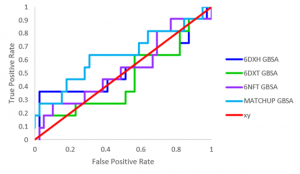

However, not all patients respond to PARP inhibitor therapy either due to intrinsic or acquired resistance to PARP inhibitors 12, 13. In BRCA germline deficient or platinum sensitive ovarian cancers, PARP1 inhibitor (Niraparib, Rucaparib, Olaparib, Talazoparib) maintenance therapy improves progression-free survival 12, 13. As a result, not only base excision repair (BER) recruitment is impaired, but PARP1 binding to DNA intermediate also disrupts replication fork progression leading onto DSB accumulation, which if unrepaired through DDR, lead to apoptosis 12, 13. PARP inhibitors block PARP1 catalytic activity thereby preventing auto-PARylation. The BRCA1 and BRCA2 genes are essential for the repair of DSB through HR. Auto-PARylation of PARP1 promotes recruitment other DNA repair factors (including XRCC1) at sites of DNA damage to facilitate DNA repair. Poly-(ADP)-ribose polymerase 1 (PARP1), a key DNA repair factor binds to single-strand breaks, gets activated leading to synthesis of PAR (poly-ADP-ribose) polymers. Synthetic lethality is a new approach to personalize ovarian cancer therapy 12, 13. The interaction of MRN with ATM 11 and ATR (ataxia-telangiectasia related protein kinase) 8, 9, 10 is key to the coordination DNA repair and cell cycle progression. The interaction of Mre11 with Rad50 and Nbs1 promotes MRN stability 8, 9, 10. Nbs1 has N-terminal BRCT & FHA domains and a C-terminal Mre11 & ATM (ataxia-telangiectasia mutated protein kinase) binding domains. Mre11 has an N-terminal nuclease domain, a RAD50 binding motif and a C-terminal DNA binding domain. The endonuclease activity is required during HR and 3′-5′ exonuclease activity of Mre11 contributes to the processing of stalled replication forks. Mre11, has endo- and exonuclease activities. Mre11 nuclease is a key component of the MRN complex. The Mre11-Rad50-Nbs1 (MRN) complex is critical for DSB recognition and repair 8, 9, 10. The error-prone non-homologous end joining (NHEJ) is involved in the repair of DSBs during G1 phase 7. During S/G2 phase of the cell cycle, DSBs are repaired through the high-fidelity homologous recombination (HR) 7. ICL is processed through the Fanconi anaemia (FA) pathway during which double strand breaks (DSB) repair intermediates are generated 4, 5, 6. Inter-strand crosslinks (ICL) that represent less than 5% of DNA lesions, if un-repaired, can block DNA replication. Platinum-induced intra-strand crosslinks adducts (which comprises about 90% of DNA lesions) are primarily repaired through the nucleotide excision repair (NER) during G1 phase of the cell cycle 1, 2, 3. However, the development of intrinsic or acquired resistance adversely impacts overall survival in patients 1, 2, 3. Platinum based chemotherapy is central to ovarian cancer therapy. We conclude that pharmaceutical development of Mre11 inhibitors is a viable clinical strategy for platinum sensitization and synthetic lethality in ovarian cancer. Selective cytotoxicity was associated with DNA double strand break (DSB) accumulation, S-phase cell cycle arrest and increased apoptosis. Importantly, Mre11 inhibition was synthetically lethal in platinum sensitive XRCC1 deficient ovarian cancer cells and 3D-spheroids.

Pre-clinically, Mre11 depletion by gene knock down or blockade by small molecule inhibitor (Mirin) reversed platinum resistance in ovarian cancer cells and in 3D spheroid models. ROC analysis showed an area under the curve (AUC) of 0.642 for response to platinum-based chemotherapy. At the transcriptomic level ( n = 1259), Mre11 overexpression was associated with poor PFS ( p = 0.003). Altered Mre11 levels was linked with genome wide alterations that can influence platinum sensitivity. In the ovarian cancer genome atlas (TCGA) cohort ( n = 498), Mre11 gene amplification was observed in a subset of serous tumours (5%) which correlated highly with Mre11 mRNA levels ( p < 0.0001).
Protein scaffold roc curves free#
In clinical cohort that received platinum- based chemotherapy ( n = 331), Mre11 protein overexpression was associated with aggressive phenotype and poor progression free survival (PFS) ( p = 0.002). Here we have comprehensively evaluated Mre11 in epithelial ovarian cancers. Upregulation of DDR may promote chemotherapy resistance. Platinating agents induce DNA damage which activate Mre11 nuclease directed DNA damage signalling and response (DDR). Platinum resistance is a clinical challenge in ovarian cancer.


 0 kommentar(er)
0 kommentar(er)
